Goldfish are one of the most popular pets in the world, and they come in a wide variety of shapes and sizes. While many people think of goldfish as large and orange, many types of goldfish come in various colors and sizes.
We think goldfish of all shapes and sizes are beautiful, but we have a special place in our hearts for the tiniest goldfish breeds. In this article, we will introduce you to 13 of the smallest goldfish breeds in the world. They may be small, but they are sure to make a big impact on your life!
13 Smallest Goldfish Breeds In The World
Now that you know a little bit more about what it takes to care for small goldfish, let’s look at some of the smallest goldfish breeds in the world!
1. Bubble Eye
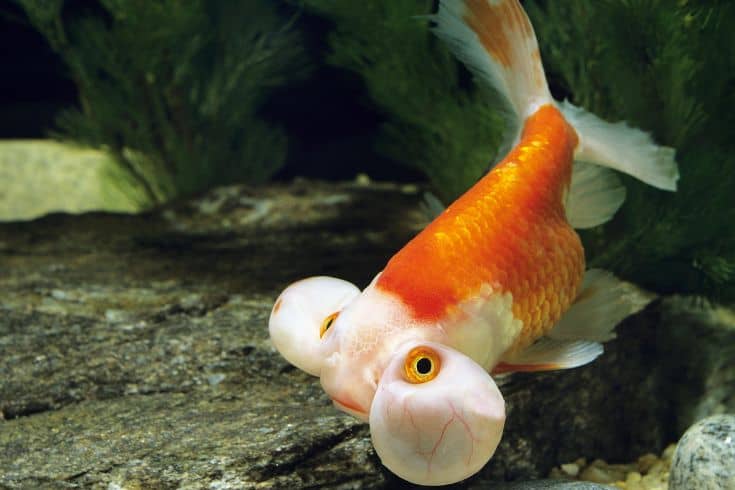
Maximum size: 4 inches
At only 4 inches in size, the Bubble Eye is the smallest species of goldfish on our list. It is characterized by its large, round eyes resembling, hence the name. As one would imagine, the delicate pouches of skin around the eyes makes them very susceptible to injury. For this reason, Bubble Eyes should be kept in a tank with a soft, sandy substrate and plenty of hiding places.
Bubble Eyes are not the best swimmers, as their eye bubbles make it difficult for them to see where they are going. Their fragile appearance also means that they are also not very good at competing for food, so they should be kept with peaceful tankmates and given plenty of hiding places to prevent them from being bullied.
2. Veiltail Goldfish
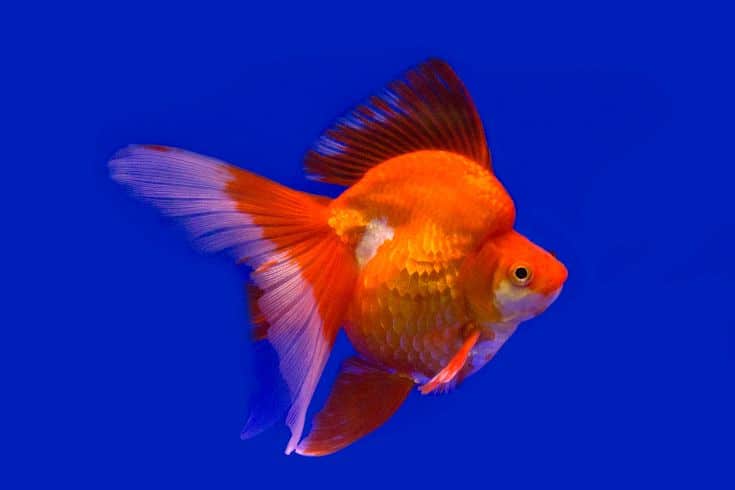
Maximum size: 4 inches
Like the Bubble Eye, the Veiltail Goldfish also only grows to approximately 4 inches in size. Its most prominent feature is its long, flowing fins which give it a graceful appearance. The Veiltail is one of the most popular types of fancy tail goldfish, and it comes in a wide variety of colors including orange, red, white, and black.
Veiltails are considered one of the most delicate goldfish varieties and are especially common health issues such as fin rot. They should be kept in a well-maintained tank with clean water and plenty of hiding places. Steer clear of rocks and tank decor with jagged edges, as Veiltails are prone to snagging their delicate fins.
3. Celestial Goldfish
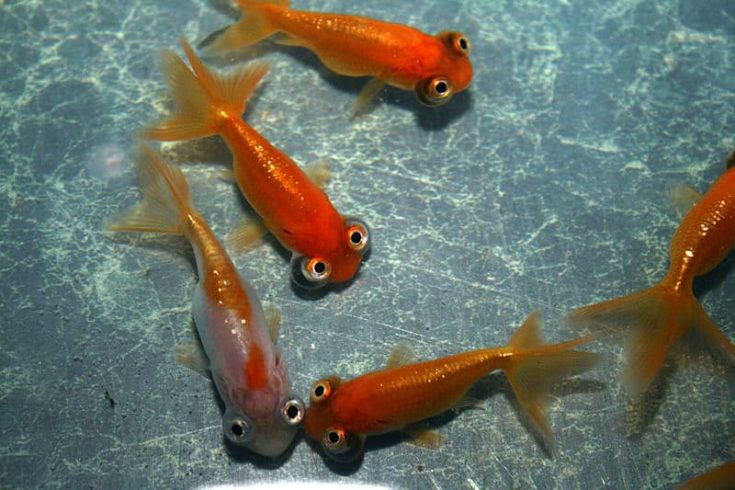
Maximum size: 5 inches
The Celestial goldfish is another fancy goldfish breed that only grows to approximately 5 inches in size. It is characterized by its large, bulging eyes which point upwards, giving it a unique appearance. Some might describe their appearance as comical, endearing, or even a bit creepy!
Celestial goldfish are easy-going breeds of goldfish that thrive on a diet of pellets, flakes, and live foods. They should be kept in a tank with plenty of swimming space and hiding places, as their large eyes make them susceptible to bullying from other fish. However, they can live up to the maximum goldfish lifespan of about 10 years in captivity with proper care.
4. Telescope
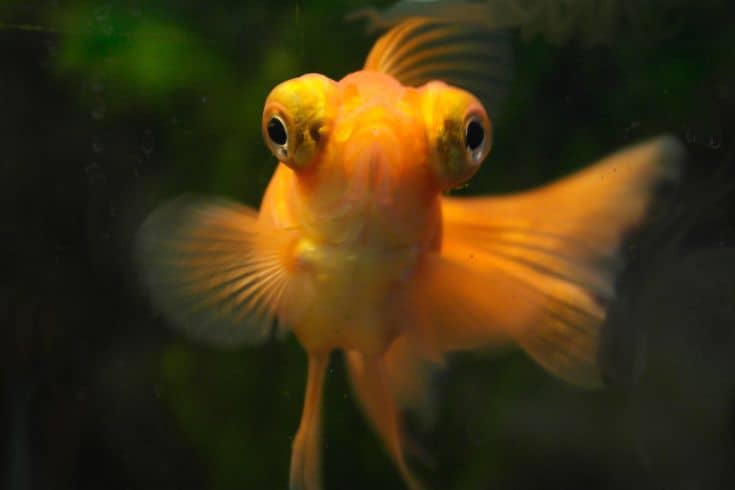
Maximum size: 6 inches
What sets the Telescope goldfish apart from other breeds is its unique eyesight. The variety of goldfish has eyes that are actually telescopic, meaning they can bulge out of their sockets and see in front of them to a certain degree. The angle at which their eyeballs sit in their sockets also gives them 360-degree vision!
While this may seem like a cool party trick, it’s actually not the best thing for the fish. Their eyes are very delicate and can easily be injured. For this reason, they should be kept in a tank with soft, sandy substrate and plenty of hiding places. Tankmates should be peaceful and non-aggressive, as the Telescope goldfish is not well equipped to defend itself.
5. Pompon Goldfish
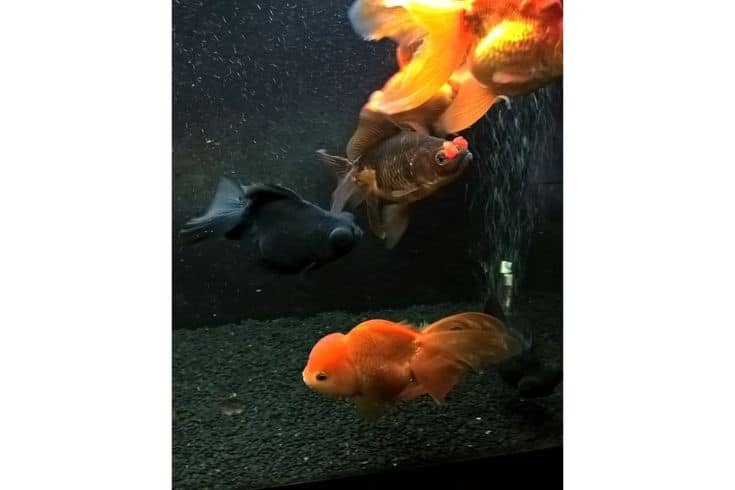
Maximum size: 6 inches
What an adorable little fish! The Pompom Goldfish is named after the distinctive red, puffy “pompoms” on its head. These are called nuchal humps, and they are a result of a genetic mutation. While they may look cute, they can make it difficult for the fish to swim and see properly.
Because the nuchal humps obscure their vision, Pompom goldfish should be kept in a clear, open tank with no hidden nooks and crannies to miss. They are peaceful fish that do well in groups, but make sure to provide plenty of swimming space as they are active swimmers.
6. Eggfish Goldfish
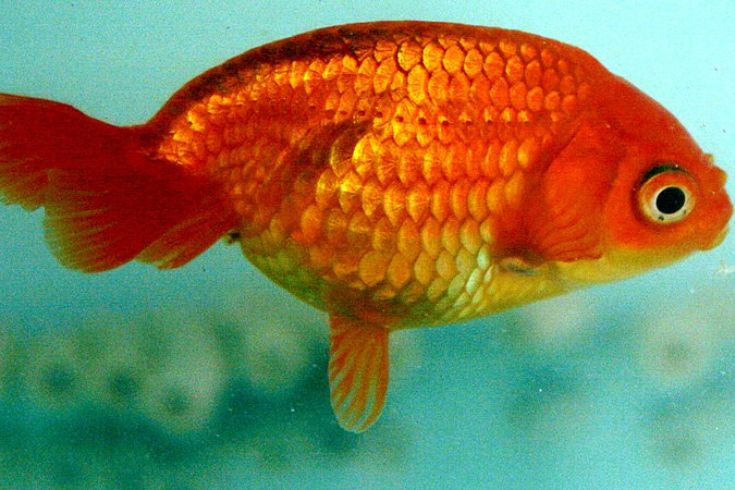
Maximum size: 7 inches
Eggfish Goldfish remind one of – you guessed it – eggs! They are small and round, with a protruding forehead and a short, upturned mouth. Each has an egg-shaped body featuring a distinctive upward arch along the back, which gives them a slightly humped appearance.
Don’t let their diminutive size fool you – these little fish are active swimmers and love to explore their surroundings. Given the opportunity, these omnivorous fish are also fond of nibbling on plants and decorations in the tank. They should be kept with other small, peaceful fish, and provided with plenty of swimming space and hiding places.
7. Ranchu
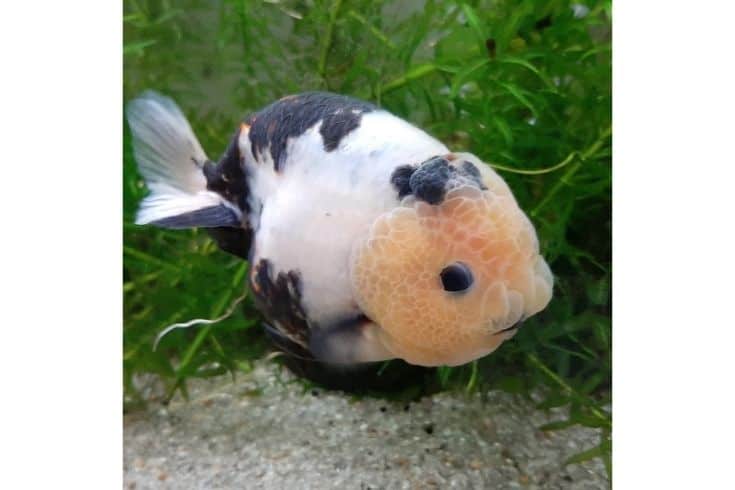
Maximum size: 8 inches
Originating in China, the Ranchu is sometimes also known as the Lionchu goldfish. Its spherical body shape and distinctive “humped” back are characterized. The head is large and fleshy, with a protruding forehead and an upturned mouth. Ranchu are usually orange or red in color, but can also be found in white or black.
One of the most popular goldfish breeds, Ranchus are known for their calm and docile nature. They spend their days leisurely swimming around the tank, and are not known to be particularly active or playful. They can be kept in groups in tanks of at least 20 gallons.
8. Pearlscale
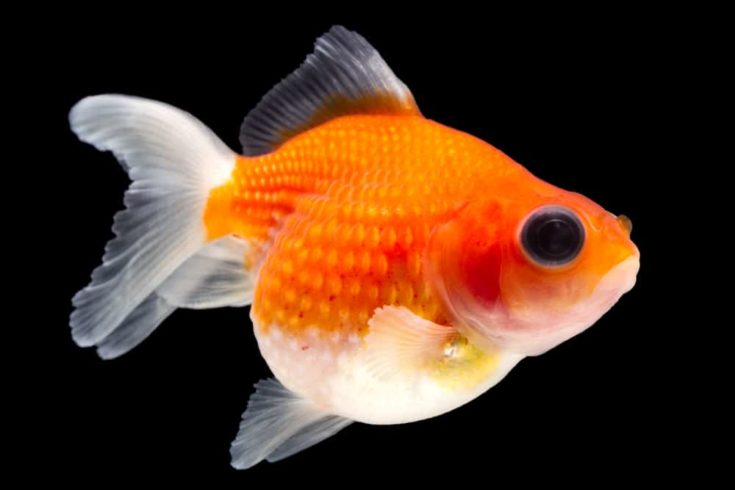
Maximum size: 8 inches
True to their name, the Pearlscale goldfish is characterized by the large, pearl-shaped scales that cover their bodies. These physical features are actually a genetic mutation that causes this variety of goldfish to produce less slime, making them more susceptible to disease. However, they do create beautiful scales that appear iridescent under bright light.
Pearlscale goldfish are slow-moving and prefer to spend their time swimming in the middle or bottom of the tank. They are not particularly active and do not require a lot of space. However, they should be kept in groups of at least six as they are social aquarium fish.
9. Japanese Ryukin
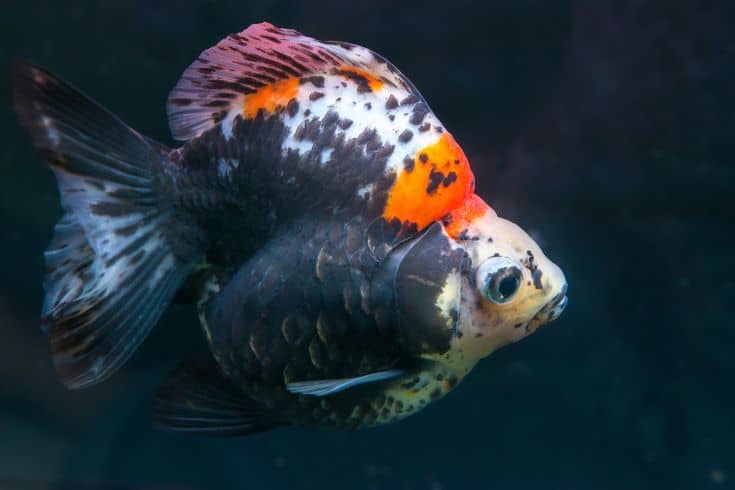
Maximum size: 8 inches
Contrary to its name, the Japanese Ryukin originated in China. It is characterized by its tall, hump-backed body and long, flowing fins. The head is large and slightly flattened, with a protruding forehead and an upturned mouth. Ryukin come in a variety of colors, including red, orange, white, and black.
Regarding personality, Ryukin goldfish are known to be active and playful, and they love to swim in the middle and top levels of the tank. They are social fish that do well in groups, but can also be kept alone.
10. Lionhead Goldfish
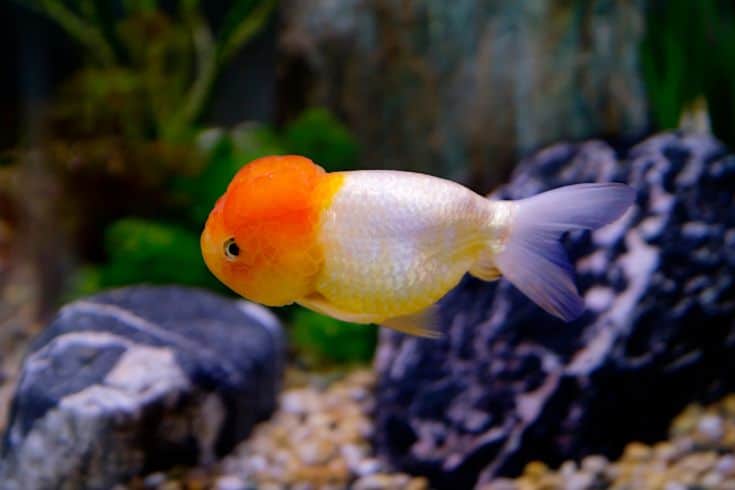
Maximum size: 8 inches
The Lionhead goldfish is easily recognizable by the large “lion’s mane” of fleshy growth that surrounds its head. By far its most noticeable feature, this growth is known as a “wen,” and can vary in size and shape from fish to fish. The body is short and round, with a protruding forehead and an upturned mouth. Lionhead goldfish come in a variety of colors, including red, orange, white, and black.
Lionhead goldfish are slow-moving and prefer to spend their time swimming in the middle or bottom of the tank. They are not particularly active, and do not require a lot of space. However, they should be kept in groups of at least six as they are social fish.
11. Fantail
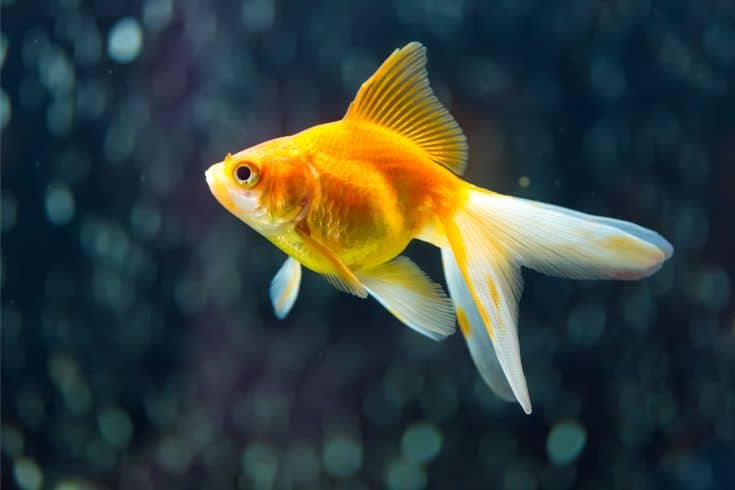
Maximum size: 12 inches
The fantail isn’t typically thought of as a “mini” goldfish, but it falls into that category compared to some of the other breeds on this list. The fantail is characterized by its deeply forked tail and rounded body. It comes in a variety of colors, including red, orange, white, and black.
Fantail goldfish are known for their active and playful personalities. They love to swim in the middle and top levels of the tank, and are known to be particularly social fish. They do well in groups, but can also be kept alone. We recommend a diet of live foods such as brine shrimp or daphnia, which will help to bring out their color.
12. Oranda
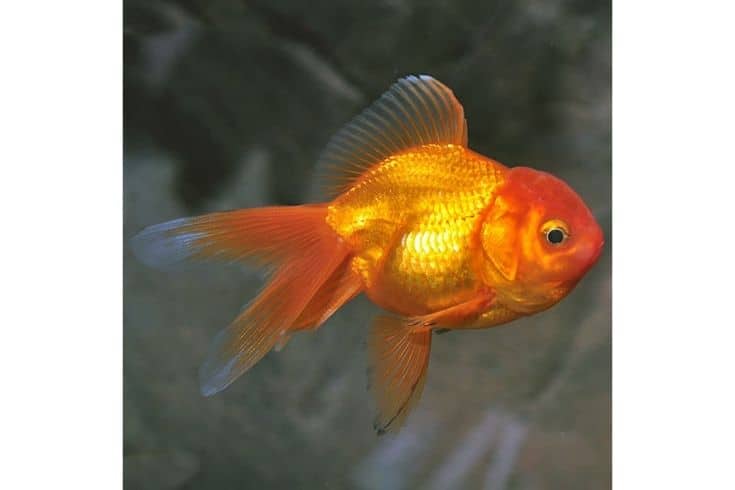
Maximum size: 12 inches
The Oranda goldfish is characterized by the large, fleshy growth that surrounds its head. This growth is known as a “wen,” and can vary in size and shape from fish to fish. The body is short and round, with a protruding forehead and an upturned mouth. Goldfish enthusiasts often refer to the Oranda as the “king of goldfish,” due to its regal appearance.
Like most goldfish, Orandas prefer an environment that’s well-maintained and free of debris. A good filtration system is a must, as is a tank of a decent size. For a pair of two orandas, we recommend a tank that’s at least 20 gallons in size, though 30 gallons would be even better.
13. Comet
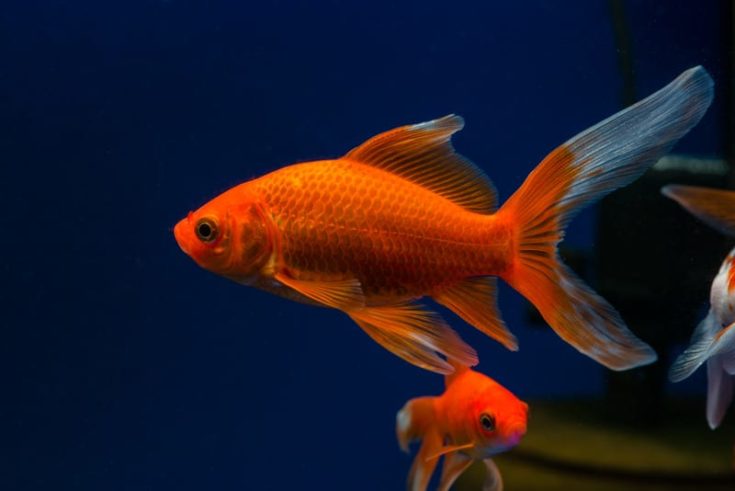
Maximum size: 12 inches
Last but not least, we have the comet goldfish. Comets are characterized by their long, deeply forked tails and a sleek, streamlined bodies. Due to their ordinary features are sometimes mistaken for common goldfish, though they are a separate breed. Comets come in a variety of colors, including red, orange, white, and black.
These fish have one of the hardiest constitutions of any goldfish breed, and can withstand a wide range of water conditions. They are also known to be particularly active and playful, and love to swim in the middle and top levels of the tank. Comets do well in groups, but can also be kept alone. Because of their size, they should be kept in outdoor ponds or larger tanks for optimal health.
Factors To Consider Before Getting A Small Goldfish
Before you decide to get a small goldfish, you should take a few things into account.
They Can Be Very Different From One Another
Even within the same breed, goldfish can vary greatly in size, color, and shape. From single-tailed goldfish to double tails, you want to ensure that you get the type you want. For instance, peacock tail goldfish are small, but they have large and flowing fins that can make them difficult to care for. The same goes for fantail goldfish, which are widely considered to be one of the most delicate goldfish varieties.
When selecting fish for your goldfish aquarium, always look for healthy fish with bright colors. Avoid fish with cloudy eyes, missing fins, or visible signs of illness. These fish are more likely to get sick and die prematurely.
You Will Still Need A Pretty Large Tank Size
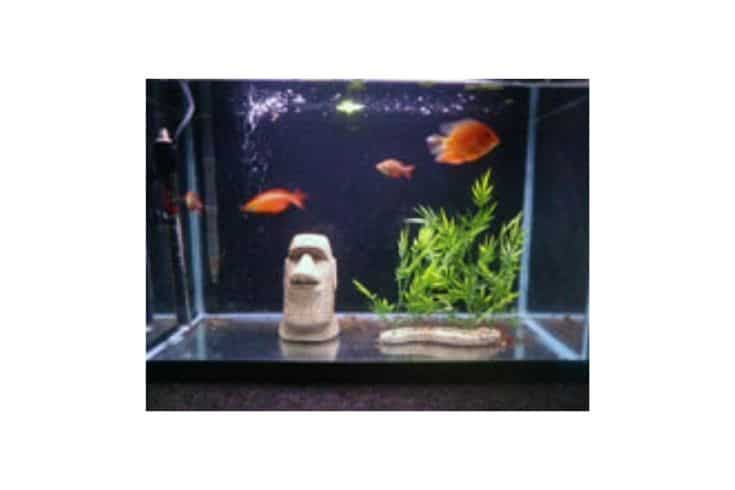
Some people mistakenly assume that the “one gallon of water per inch of fish” rule goes out the window when it comes to smaller goldfish, but this cannot be further from the truth. In fact, these diminutive pets require tons of extra care and attention.
As a rule of thumb, you should have at least 10 gallons of water in your goldfish aquarium for every small fish. Whether this is a 5-week old goldfish or a full-grown adult, they will still need a lot of space to swim and explore.
Tank Mate Compatibility Becomes Extra Important
These beautiful goldfish varieties are often kept as solo pets but can also be kept with compatible tank mates. When choosing tank mates for your small goldfish, always look for fish that are of a similar size and temperament. Many tiny goldfish tend to be slow swimmers, so they are often best kept with other slow-moving fish.
In addition, you should look for fish that thrive in similar aquarium conditions. Read a care guide to determine their preferred water temperature and parameters. Inadequate housing conditions and crowded conditions are the leading cause of death in pet goldfish, so it is important to do your research before bringing them home.
Their Beautiful Appearance Takes Maintenance
Goldfish are blessed with a good degree of natural beauty, but don’t be fooled – it takes a lot of work to keep them looking their best. In addition to feeding them the appropriate food type, certain tank setups are necessary to bring out their colors.
For instance, dimmer lights will make your goldfish’s colors appear more vibrant, while brighter aquarium lights will wash them out. Natural foods like live plants and brine shrimp are also excellent for bringing out the colors in your goldfish’s body, while maintaining a healthy growth rate.
And, of course, regular water changes are a must for all goldfish aquariums. Depending on the size of your tank, you should do a partial water change of 10-25% every week. This will help remove harmful toxins and pollutants from the water while replenishing necessary minerals and nutrients.
Conclusion
There you have it! These are just a few of the smallest goldfish breeds out there. As you can see, there’s a lot of variety in terms of size, shape, and color. So whatever your preference, there’s bound to be a mini goldfish that’s perfect for you. Thanks for reading, and check out our other goldfish care and maintenance articles!
